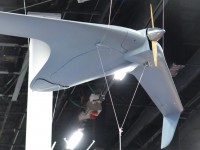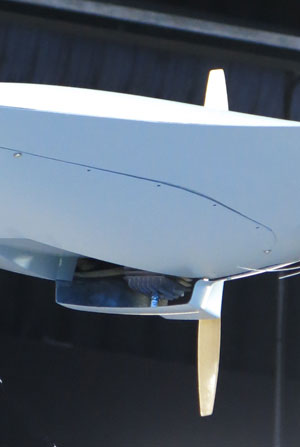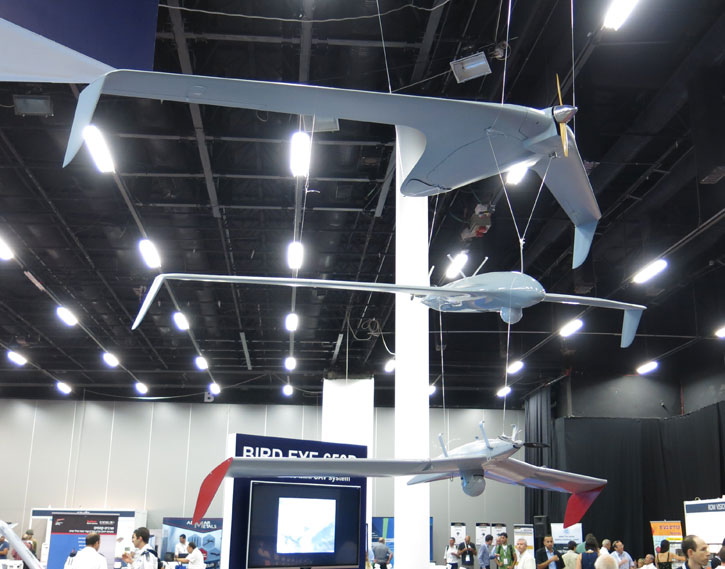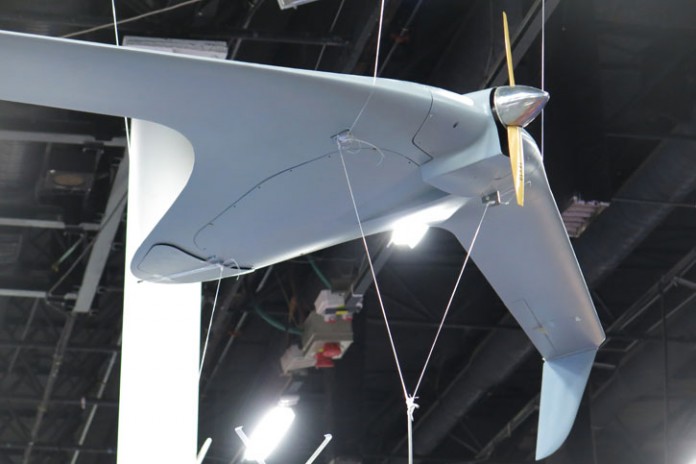
Israel Aerospace Industries has unveiled its BirdEye 650D mini unmanned air vehicle (UAV) at the recent IDAS-BMD symposium in Tel Aviv. The new version is a third variant of the BirdEye 650 mini-UAV. The 650D is extending the platform’s mission endurance from two and three hours to 24. Previous versions required committing two or three UAVs to achieve a 24 hour cycle.

These specifications typically require endurance of 20-24 hours and payload weight class of 5-6 kg. While IAI’s MiniPOP is slightly heavier for this application, lighter payloads conforming with this class are the multi-sensor TASE 350, comprising an IR and HD camera weighing 3.5 kg (7.25lb) from UTC or the Israeli T-Stamp, a 2.8 kg stabilized payload carrying a cooled IR and TV camera from Controp.
Electrical propulsion is far from meeting such goals. To meet this goal with a compact platform, IAI engineers scaled up the BirdEye 650 platform, adding a small combustion engine, and fuel tank sustaining 20-24 hours (depending on the payload used). The BirdEye supports such mission endurance with a starter-alternator sustaining the charged battery supporting the avionics, datalink and payload on the extended mission. In this configuration the BirdEye 650D has a longer fuselage and larger wing span, enabling maximum take-off weight of 30kg (66lb). The new model has an operational radius of over 50km (27nm).
The new version is launched from a catapult and retrieved by parachute and airbag. As performed by other BirdEye models, the 650D also uses a belly placed parachute that, when retrieved, flips the drone on its back, protecting the payload from ground impact. This flipped landing method eliminates the need for retractable turret. This mini-UAV will also be configured to operate from naval vessels, using a catapult launch systems and several, optional at-sea retrieval systems.





















